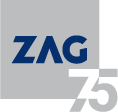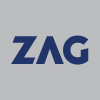
The most promising 3D printing method is an extrusion-based approach where concrete is pumped to the printhead and squeezed through a circular or square nozzle. The motion of the printhead is enabled by an articulated robotic arm or a gantry crane. The behaviour of the filament after the extrusion is governed by its rheological properties. While stiff concrete enables the deposition of a larger number of subsequent layers without collapse the bond between the layers is poor. Soft filaments, on the other hand, bond well but they are prone to collapse due to the weight of the subsequent layers. Extrusion-based 3D printing with concrete, therefore, relies on the manipulation of the rheological properties and the use of accelerators. Both requires expert knowledge and testing equipment not readily available in the construction industry. This project thus proposes printing with two filaments where the soft filament binds the layers of stiff filaments and where the latter provide the stability to the printed product. The mix design of such filaments is simple.
The 3D-printed structural elements are often assessed by adopting the principles of masonry construction. The aptness of such an approach is even more evident in two-filament printing. Masonry structures are associated with bricks and brick forming is done by extrusion. This leads us to the idea of using two-filament printing to fabricate earth buildings. Building with earth, which contains a sufficient amount of clay, is an ancient construction technique which is on the rise in modern construction due to sustainability benefits and accessibility. However, to facilitate the implementation, it is of paramount importance to develop digital fabrication methods since a lack of technology is recognized as a technical barrier in earth construction.
Project objectives are thus defined as:
- develop a double-nozzle printhead and build a small-size concrete printer prototype for two-filament printing which enables the usage of simple concrete and mortar compositions;
- determine the range of suitable rheological parameters for stiff and soft filaments for concrete and earth and establish a system of simple test methods to assess filament suitability;
- demonstrate the two-filament 3D printing technology by printing a small-scale structural element, test both elements and compare the results with structural analysis derived from masonry structures.

